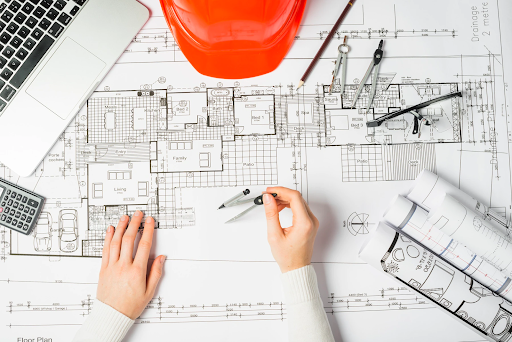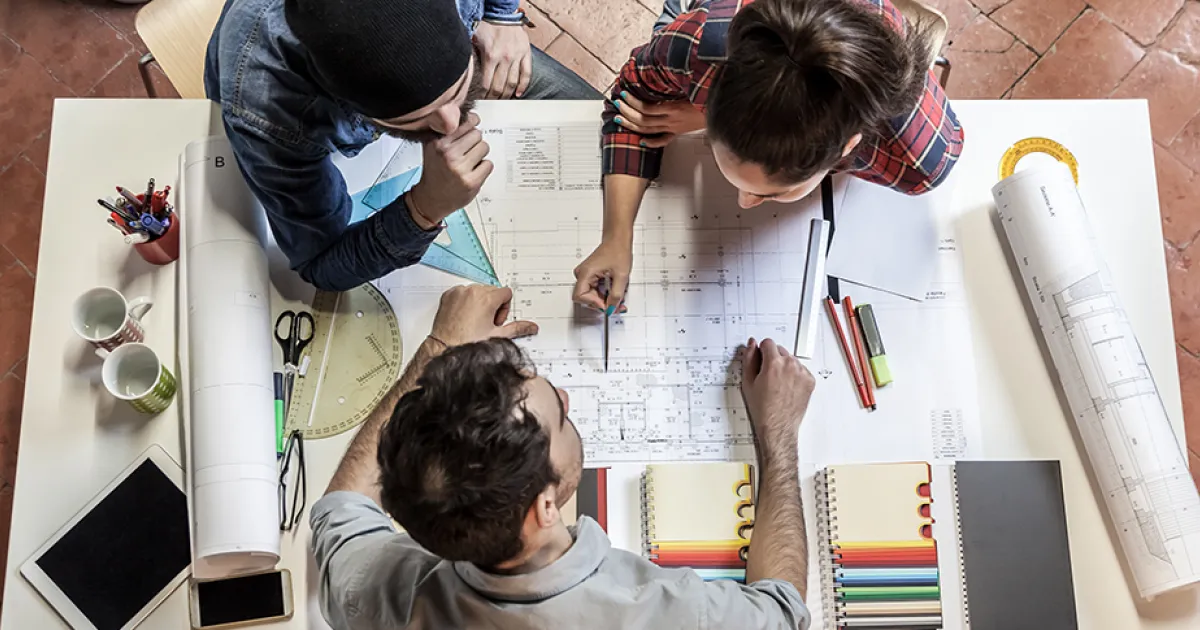Recognizing the Diverse Profession Paths Available for Aspiring Architect
As an aspiring Architect, you have a globe of profession courses waiting for you. Whether you're attracted to standard design or the nuances of lasting layout, there's a specific niche that lines up with your interests.
Standard Architecture: Designing Structures and buildings
Typical style concentrates on developing structures and frameworks that mix functionality with aesthetic appeal. As you explore this field, you'll value the detailed balance between form and objective. You'll learn to attract inspiration from historical styles, integrating components like proportion, materials, and workmanship. Your layouts can show cultural heritage, showcasing neighborhood practices while meeting contemporary needs.
You'll establish skills in drafting, model-making, and website analysis, enabling you to imagine and connect your concepts properly. Involving with clients, you'll need to recognize their vision and translate it right into possible styles.
Moreover, developing codes and sustainability methods are vital in your work, guaranteeing your structures are secure and eco pleasant. As you grow in your occupation, you'll discover possibilities in residential, commercial, and even remediation projects, each offering unique obstacles. Embracing traditional style leads the way for a meeting career that admires the past while shaping the future.
Urban Preparation: Forming Areas and Public Spaces
As an ambitious Architect, you can play a necessary role as a city organizer, changing how areas operate and engage. By using neighborhood interaction approaches, you'll assure that citizens have a voice in forming their atmosphere. And also, integrating sustainable style principles will certainly aid develop spaces that not just meet today's requirements yet additionally safeguard the future.
Duty of Urban Planners
While numerous may consider designers as the sole enthusiasts behind buildings, urban coordinators play an important duty fit the wider landscape of areas and public spaces. They assess land use, zoning regulations, and community needs to create sustainable atmospheres that improve lifestyle. By collaborating with different stakeholders, you'll help create parks, transportation systems, and houses that promote social communication and access. Urban coordinators also focus on ecological considerations, guaranteeing that developments integrate green spaces and support biodiversity. Your competence in spatial style and area dynamics enables you to picture future growth while preserving cultural heritage. In this crucial role, you'll directly affect exactly how individuals experience their surroundings, making every job a chance for positive modification.
Community Interaction Strategies
Effective community interaction strategies are essential for metropolitan coordinators to guarantee that the voices of locals are listened to and valued in the planning procedure. To promote significant discussion, you need to prioritize open discussion forums and workshops where neighborhood participants can reveal their ideas and problems. By actively listening and including comments, you'll develop rooms that show the community's requirements, ultimately leading to even more effective and lasting metropolitan environments.
Sustainable Style Concepts
When making metropolitan areas, incorporating lasting design principles is crucial for developing settings that flourish both ecologically and socially. You should begin by concentrating on power efficiency, utilizing materials that minimize waste and advertise recycling. Think about integrating environment-friendly rooms, like yards and parks, to improve biodiversity and enhance air quality. Promoting walkability and public transport can lessen dependence on cars, fostering a healthier area.
Designing with water preservation in mind is also crucial-- believe concerning rainfall yards and permeable surface areas to handle stormwater. Involving neighborhood members throughout the planning process warranties that the spaces you develop meet their demands and urge social communication. By embracing these concepts, you'll add to vibrant, sustainable urban landscapes that benefit everyone.

Landscape Style: Creating Sustainable Outdoor Settings
As you discover landscape style, you'll find important style principles that develop practical and gorgeous outside spaces. Sustainable practices play an essential role in making certain these atmospheres thrive while minimizing ecological effect. And also, you'll find a selection of career chances that enable you to make an actual difference in just how individuals communicate with nature.
Layout Principles in Landscape
Recognizing design principles in landscape style is crucial for producing lasting outdoor atmospheres that harmonize with nature. You'll require to contemplate elements like range, proportion, and equilibrium to ensure your layouts feel natural and welcoming. Integrating indigenous plants not only enhances biodiversity but likewise lowers water usage, making your landscape durable. Think of the flow of area and exactly how people communicate with it; paths and seating areas ought to welcome expedition and leisure. In addition, focus on seasonal modifications, creating with materials that complement the surroundings year-round (Architect). By prioritizing sustainability and looks, you can produce outside spaces that enrich the neighborhood and promote wellness. Welcoming these concepts will certainly establish a solid structure for your job in landscape architecture.
Lasting Practices Overview
Lasting techniques in landscape style not only concentrate on looks yet additionally focus on ecological health and wellness and source preservation. By incorporating native plants, you improve biodiversity and reduce the demand for chemical plant foods and pesticides. Implementing efficient irrigation systems helps conserve water and decreases overflow, securing close-by ecosystems. You can make spaces that advertise dirt health and wellness, such as practicing and making use of organic products permaculture principles. Additionally, integrating eco-friendly facilities, like rain yards and porous sidewalks, aids in stormwater management and lowers metropolitan warmth. You contribute to a much healthier planet and give rooms that promote area connection when you produce exterior environments with sustainability in mind. Inevitably, these methods her response assure your designs benefit both individuals and the environment for years to find.
Career Opportunities Exploration
With a strong structure in sustainable practices, landscape style offers a selection of career paths that enable you to make a significant effect on the environment. Urban organizers usually collaborate with landscape architects to create environment-friendly spaces in metropolitan settings, enhancing city livability. If you're enthusiastic regarding education, think about becoming a landscape design educator, motivating future generations.
Sustainable Layout: Focusing on Eco-Friendly Practices
As you explore your career in style, embracing eco-friendly methods can establish you apart in a competitive area. Sustainable layout focuses on producing structures that reduce environmental influence while enhancing passenger well-being. By integrating eco-friendly materials, energy-efficient systems, and lasting structure techniques, you'll add to a greener future.
Begin by obtaining knowledge of environment-friendly certifications like LEED or BREEAM, which can boost your qualifications. Consider exactly how all-natural light, ventilation, and thermal efficiency can enhance style. Collaborate with engineers and ecological professionals to innovate services that minimize waste and save resources.
Do not neglect the significance of neighborhood participation-- appealing regional stakeholders can motivate layouts that integrate with the setting. As clients progressively prioritize sustainability, your proficiency in environment-friendly techniques will not just attract jobs however likewise meet your passion for responsible design. Accept this essential aspect of the occupation, and view your profession prosper.
Historic Conservation: Shielding and Recovering Social Heritage
While you start on your architectural journey, consider the vital function of historical conservation in maintaining our cultural heritage. This area focuses on the defense and remediation of significant structures, websites, and structures that inform the tales of our past. By taking part in historic preservation, you'll help safeguard the building heritage that forms neighborhood identity.
As a historic preservation Architect, you'll analyze historical relevance and analyze the problem of structures. You'll work carefully with guardians and chroniclers to assure authentic reconstruction methods are used. This job path enables you to blend creative thinking with research, allowing you to develop services that respect initial materials and craftsmanship.
Your job not only adds to sustainability by recycling existing buildings however also cultivates a sense of pride within communities. Accepting this course will assist you come to be a guardian of history, maintaining the tales and aesthetics that improve our lives.
Inside Style: Enhancing Indoor Spaces
Historic conservation and indoor style both share a commitment to improving the constructed environment, but they concentrate on different elements. While historical conservation stresses preserving a structure's historic and social worth, indoor architecture absolutely nos in on maximizing indoor rooms for performance and looks.
As an aspiring Architect, you'll locate that interior design allows you to blend creative thinking with technical abilities. You'll develop areas that not just look great yet likewise advertise comfort and effectiveness. This field involves understanding just how light, color, and materials connect within a room, affecting state of mind and use.
You'll service various tasks, from domestic homes to business offices, making certain that each atmosphere satisfies the demands of its occupants. By focusing on customer experience, you can change insides right into motivating and practical spaces, making a considerable effect on how people interact with their environments. Welcome the possibility to improve indoor environments and form the means people live and work.
Industrial Design: Merging Capability With Appearances
Industrial design plays a crucial function in creating products that seamlessly blend looks with performance, making sure that what you utilize daily is not just visually enticing however also practical. As an ambitious Architect, you can engage yourself in this area, concentrating on developing every little thing from furniture to customer electronic devices. Your job entails comprehending user needs, materials, and making procedures, allowing you to develop ingenious services that enhance daily experiences.
In industrial style, you'll usually team up with marketing experts, manufacturers, and designers, ensuring that your layouts are not just beautiful but also feasible. This career course uses browse around here a dynamic environment where creative thinking satisfies usefulness, making it a rewarding selection for engineers interested in shaping the items of tomorrow.
Regularly Asked Concerns
What Educational Accreditations Do I Need to Come To Be a Designer?
To end up being a designer, you'll require a specialist degree in style, typically a Bachelor's or Master's. In addition, you'll need to complete an internship and pass the Architect Registration Examination to exercise legitimately.
Exist Certification Requirements for Various Architectural Career Paths?
Yes, there're qualification needs for different architectural courses. Architect. You'll require to pass examinations, complete teaching fellowships, and often pursue specialized training, depending upon your chosen emphasis, like landscape architecture, city style, or historical preservation
What Software Skills Are Important for Architects Today?

Exactly How Can I Gain Practical Experience While Examining Design?
You can gain sensible experience by interning at building firms, taking part in style competitors, volunteering for area tasks, or teaming up with classmates on real-world tasks. These chances improve your abilities and construct beneficial connections in the sector.
What Task Opportunities Exist Outside Standard Style Firms?
You can explore numerous task chances outside typical style companies, like metropolitan planning, interior decoration, landscape architecture, construction administration, real estate development, or perhaps duties in sustainability consulting. Each deals special obstacles and rewards.
Whether you're attracted to standard architecture or the nuances of lasting layout, there's a specific niche that straightens with your rate of interests.When creating metropolitan spaces, incorporating sustainable layout concepts is critical for developing atmospheres that prosper both ecologically and socially.As you explore landscape design, you'll discover important layout concepts that create functional and attractive exterior rooms.Understanding design principles in landscape architecture is vital for creating sustainable outdoor settings that harmonize with nature.In industrial design, you'll often collaborate with manufacturers, designers, and marketers, making certain that your designs are not only lovely yet also feasible.